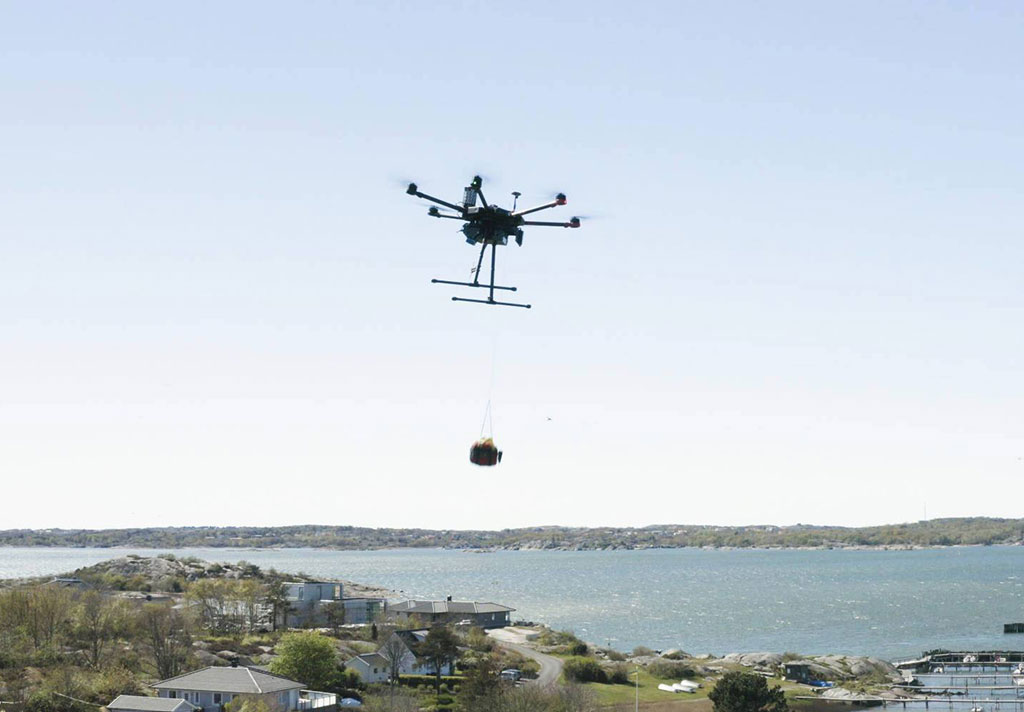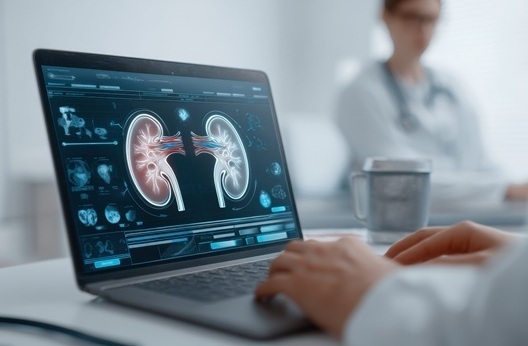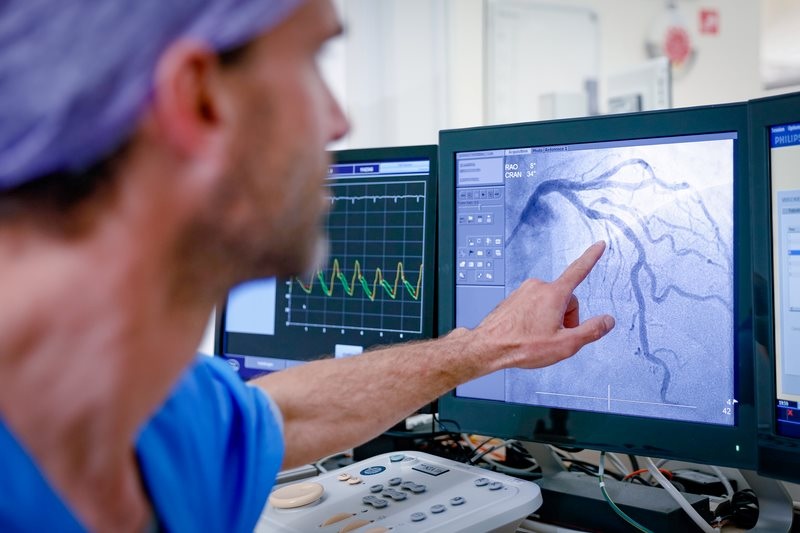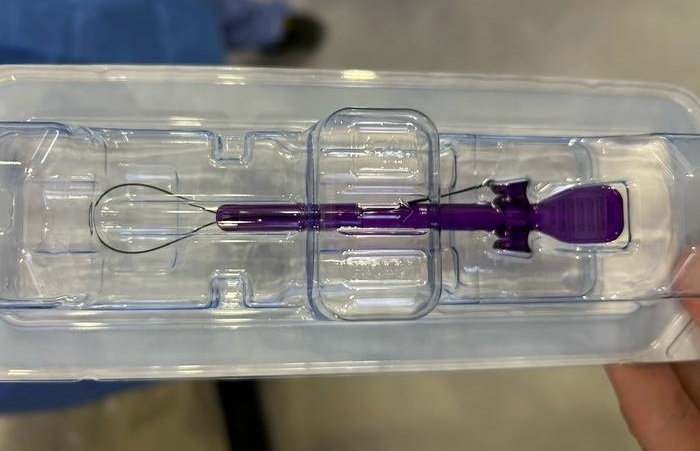Autonomous Drones Deliver Defibrillators in Sweden 
|
By HospiMedica International staff writers Posted on 25 May 2020 |

Image: An Everdrone delivering its AED over Gothenburg (Photo courtesy of Everdrone)
An innovative drone system delivers automated external defibrillators (AEDs) to the scene of cardiac arrests, helping bystanders initiate life-saving measures while awaiting professional medical care.
Developed by Everdrone (Säve, Sweden), the AED drone system is now available to more than 80,000 residents in the Gothenburg area of Sweden as part of a clinical study being held in collaboration with national emergency call center SOS Alarm (Stockholm, Sweden) and the Centre for Resuscitation Science at the Karolinska Institutet (KI; Solna, Sweden). The study, which will launch in June 2020, will run through the end of September 2020. Outcomes will be continuously evaluated by KI.
During the study period, three drone systems will be placed in designated locations, ready to respond to emergency 112-calls occurring within a radius of six kilometers. Obstacle avoidance functionality is built on Intel RealSense technology, intelligent route planning is built-in to significantly reduce flight time over people, and an onboard parachute system is designed to mitigate risk in the case of a bird strike or critical propulsion failure. When the drone arrives at the designated location, the AED will be lowered to the ground while the drone remains hovering in place at 30 meters altitude.
“The collaboration with SOS Alarm and KI has been absolutely crucial for the realization of the concept in terms of being able to perform a swift alarm response, and to manage the medical and ethical issues involved,” said Mats Sällström, CEO of Everdrone. “The method of lowering the defibrillator from the drone with the help of a winch is something we have been developing and testing for a long time. We have performed countless test deliveries in recent months, and the results show that the method works very well.”
"In the event of a cardiac arrest, the drone is dispatched at the same time as the ambulance and will certainly be the first to arrive on the scene. Our operators are ready to instruct bystanders on how to initiate the life-saving device," said Mattias Regnell, head of innovation and research at SOS Alarm.
An AED is a portable electronic device that automatically diagnoses the potentially life threatening cardiac arrhythmias of ventricular fibrillation and ventricular tachycardia (VT) and is able to treat them through defibrillation, the application of electrical therapy which stops the arrhythmia, allowing the heart to reestablish an effective rhythm.
Related Links:
Everdrone
SOS Alarm
Centre for Resuscitation Science at the Karolinska Institutet
Developed by Everdrone (Säve, Sweden), the AED drone system is now available to more than 80,000 residents in the Gothenburg area of Sweden as part of a clinical study being held in collaboration with national emergency call center SOS Alarm (Stockholm, Sweden) and the Centre for Resuscitation Science at the Karolinska Institutet (KI; Solna, Sweden). The study, which will launch in June 2020, will run through the end of September 2020. Outcomes will be continuously evaluated by KI.
During the study period, three drone systems will be placed in designated locations, ready to respond to emergency 112-calls occurring within a radius of six kilometers. Obstacle avoidance functionality is built on Intel RealSense technology, intelligent route planning is built-in to significantly reduce flight time over people, and an onboard parachute system is designed to mitigate risk in the case of a bird strike or critical propulsion failure. When the drone arrives at the designated location, the AED will be lowered to the ground while the drone remains hovering in place at 30 meters altitude.
“The collaboration with SOS Alarm and KI has been absolutely crucial for the realization of the concept in terms of being able to perform a swift alarm response, and to manage the medical and ethical issues involved,” said Mats Sällström, CEO of Everdrone. “The method of lowering the defibrillator from the drone with the help of a winch is something we have been developing and testing for a long time. We have performed countless test deliveries in recent months, and the results show that the method works very well.”
"In the event of a cardiac arrest, the drone is dispatched at the same time as the ambulance and will certainly be the first to arrive on the scene. Our operators are ready to instruct bystanders on how to initiate the life-saving device," said Mattias Regnell, head of innovation and research at SOS Alarm.
An AED is a portable electronic device that automatically diagnoses the potentially life threatening cardiac arrhythmias of ventricular fibrillation and ventricular tachycardia (VT) and is able to treat them through defibrillation, the application of electrical therapy which stops the arrhythmia, allowing the heart to reestablish an effective rhythm.
Related Links:
Everdrone
SOS Alarm
Centre for Resuscitation Science at the Karolinska Institutet
Latest Critical Care News
- EEG-Based AI Technology Accurately Diagnoses Alzheimer’s and Dementia
- Robot Lymphatic System Paves Way for Self-Powered Wearables and Machines
- Focused Ultrasound Technique Successfully Treats Pediatric Brain Cancer
- Nasal Drops Fight Brain Tumors Noninvasively
- AI Helps Optimize Therapy Selection and Dosing for Septic Shock
- Glowing Bacteria ‘Pills’ for Detecting Gut Diseases Could Eliminate Colonoscopies
- Skin-Permeable Polymer Patch Delivers Insulin Non-Invasively Through Skin
- Nanogel Technology Almost 100% Effective in Destroying Drug-Resistant Bacteria Within Hours
- Wearable Ultrasound Sensor Delivers Noninvasive Treatment Without Surgery
- Gel-Free ECG System to Transform Heart Health Diagnosis
- Biodegradable Patch Repairs Damaged Tissue After Heart Attack
- Magnetically Guided Microrobots to Enable Targeted Drug Delivery

- Smart Nanomaterials Detect and Treat Traumatic Brain Injuries Simultaneously
- Earlier Blood Transfusion Could Reduce Heart Failure and Arrhythmia in Heart Disease Patients
- 'Smart' Shirt Detects Epileptic Seizures in Real Time
- Skin Patch Measures Effectiveness of Flu/COVID Vaccines in 10 Minutes
Channels
Surgical Techniques
view channelLaparoscopic Surgery Improves Outcomes for Severe Newborn Liver Disease
Biliary atresia is a rare but life-threatening liver condition in newborns that blocks bile flow and leads to progressive liver damage if not treated early. Surgery is typically performed within the first... Read moreNovel Endoscopy Technique Provides Access to Deep Lung Tumors
Detecting lung cancer early can save lives, but diagnosing small tumors deep in the outer regions of the lungs remains a major clinical challenge. Although CT scans frequently identify tiny suspicious... Read morePatient Care
view channel
Revolutionary Automatic IV-Line Flushing Device to Enhance Infusion Care
More than 80% of in-hospital patients receive intravenous (IV) therapy. Every dose of IV medicine delivered in a small volume (<250 mL) infusion bag should be followed by subsequent flushing to ensure... Read more
VR Training Tool Combats Contamination of Portable Medical Equipment
Healthcare-associated infections (HAIs) impact one in every 31 patients, cause nearly 100,000 deaths each year, and cost USD 28.4 billion in direct medical expenses. Notably, up to 75% of these infections... Read more
Portable Biosensor Platform to Reduce Hospital-Acquired Infections
Approximately 4 million patients in the European Union acquire healthcare-associated infections (HAIs) or nosocomial infections each year, with around 37,000 deaths directly resulting from these infections,... Read moreFirst-Of-Its-Kind Portable Germicidal Light Technology Disinfects High-Touch Clinical Surfaces in Seconds
Reducing healthcare-acquired infections (HAIs) remains a pressing issue within global healthcare systems. In the United States alone, 1.7 million patients contract HAIs annually, leading to approximately... Read moreHealth IT
view channel
EMR-Based Tool Predicts Graft Failure After Kidney Transplant
Kidney transplantation offers patients with end-stage kidney disease longer survival and better quality of life than dialysis, yet graft failure remains a major challenge. Although a successful transplant... Read more
Printable Molecule-Selective Nanoparticles Enable Mass Production of Wearable Biosensors
The future of medicine is likely to focus on the personalization of healthcare—understanding exactly what an individual requires and delivering the appropriate combination of nutrients, metabolites, and... Read moreBusiness
view channel
Philips and Masimo Partner to Advance Patient Monitoring Measurement Technologies
Royal Philips (Amsterdam, Netherlands) and Masimo (Irvine, California, USA) have renewed their multi-year strategic collaboration, combining Philips’ expertise in patient monitoring with Masimo’s noninvasive... Read more
B. Braun Acquires Digital Microsurgery Company True Digital Surgery
The high-end microsurgery market in neurosurgery, spine, and ENT is undergoing a significant transformation. Traditional analog microscopes are giving way to digital exoscopes, which provide improved visualization,... Read more
CMEF 2025 to Promote Holistic and High-Quality Development of Medical and Health Industry
The 92nd China International Medical Equipment Fair (CMEF 2025) Autumn Exhibition is scheduled to be held from September 26 to 29 at the China Import and Export Fair Complex (Canton Fair Complex) in Guangzhou.... Read more















